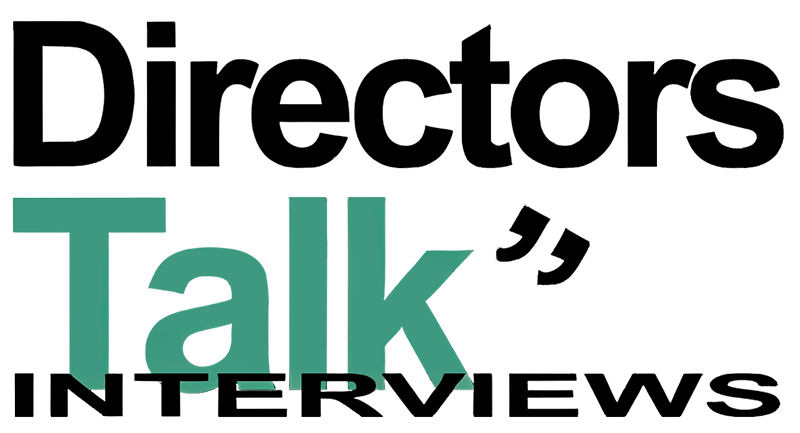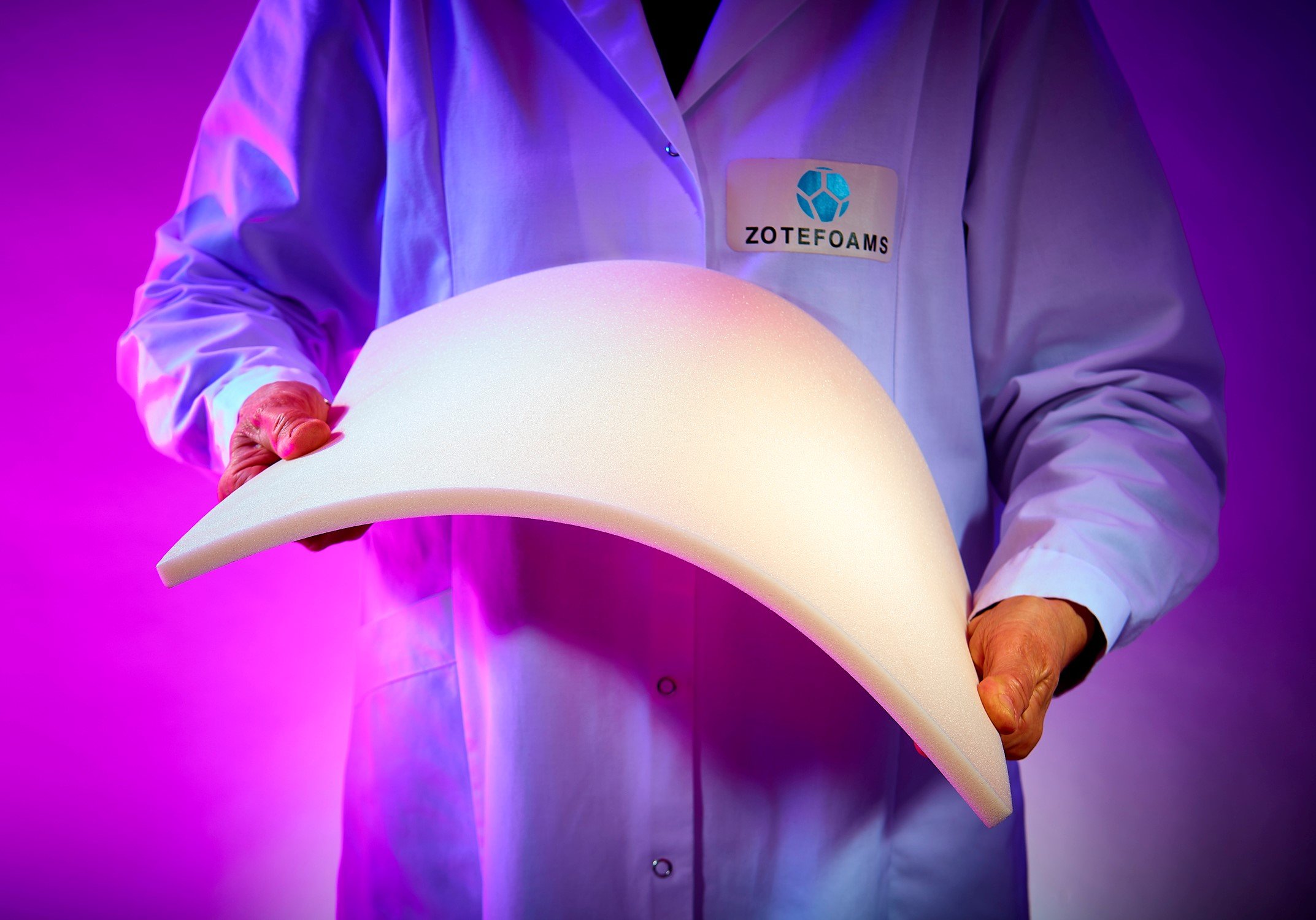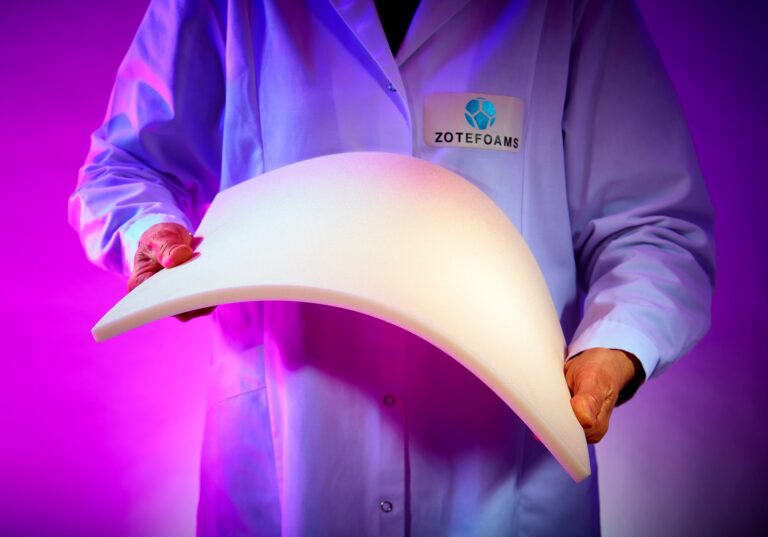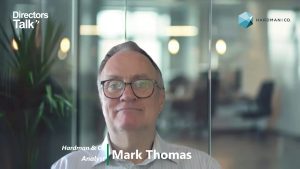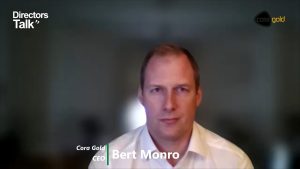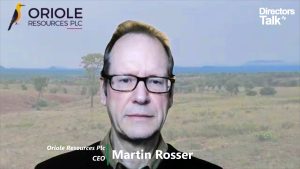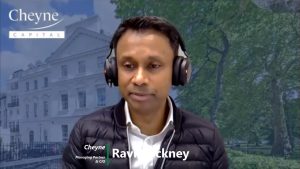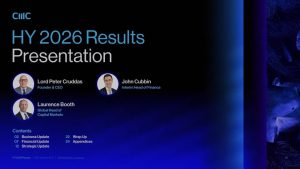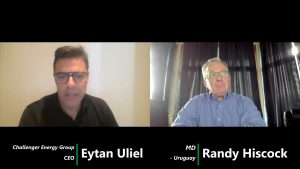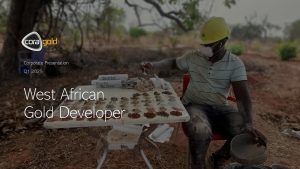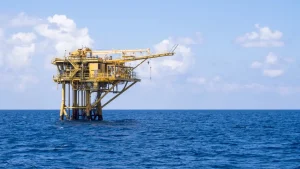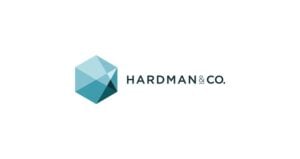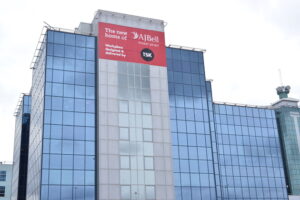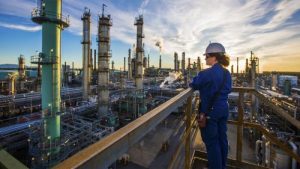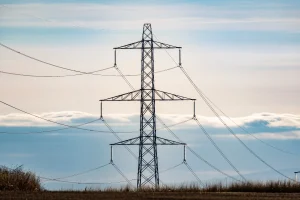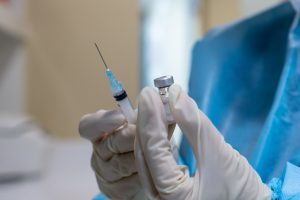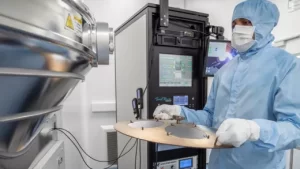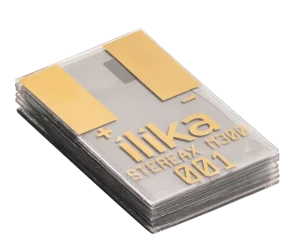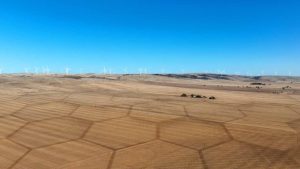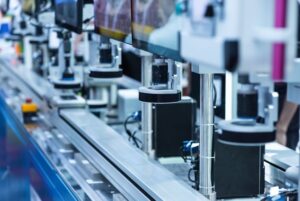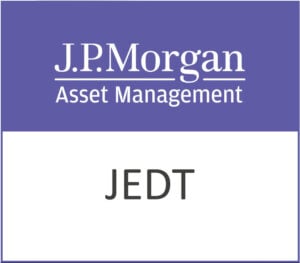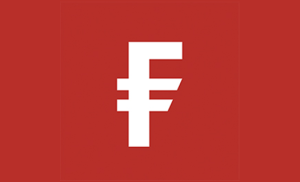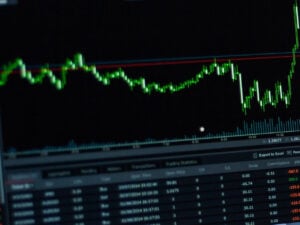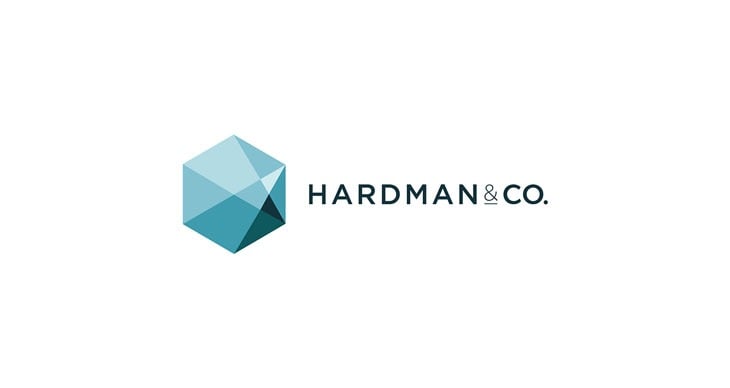Zotefoams plc (LON:ZTF), a world leader in supercritical foams, has announced its interim results for the six months ended 30 June 2025.
Results highlights
| · | Record H1 sales performance, with Group reported revenue up 9% to £77.4m (HY 2024: £71.1m), representing constant currency growth of 10%: |
| – EMEA revenue up 11% to £61.4m (HY 2024: £55.3m)- North America revenue up 10% to £14.5m (HY 2024: £13.1m)- Consumer & Lifestyle revenue up 16% to £38.6m (HY 2024: £33.3m)- Transport & Smart Technologies revenue up 13% to £26.2m (HY 2024: £23.1m)- Construction and Other Industrial revenue down 14% to £12.6m (HY 2024: £14.7m) | |
| · | Further increase in margins delivered record H1 profit performance: |
| – Gross margin up 140 bps to 34.6% (HY 2024: 33.2%)- Operating margin increased by 220 bps to 15.8% (HY 2024: 13.6%) | |
| – Profit before tax up 37% to a record £11.4m (HY 2024: £8.3m) | |
| · | Basic earnings per share up 55% to 19.99p (HY 2024: 12.89p) |
| · | Strong balance sheet: |
| – Improved cash generation from operations up 86% to £15.8m (HY 2024: £8.5m)- Net debt (covenant basis2) of £21.1m (HY 2024: £35.1m), representing leverage of 0.7x (FY 2024: 0.9x; HY 2024: 1.4x) | |
| · | Interim dividend increased by 5.0% to 2.50p per share (HY 2024: 2.38p per share) |
Strategic highlights
| · | Excellent progress aligning the commercial functions to focus on three target market verticals on a global basis with existing staff repositioned into the new structure and good progress made in recruiting industry experts into key roles. |
| · | The development of a new manufacturing facility in Vietnam continues as planned and will position the Group closer to a key global footwear manufacturing hub. Post period end, Zotefoams announces it will partner in this venture, via a new operating subsidiary, with Seoheung Co. Ltd. (“Seoheung”), a footwear supply chain specialist manufacturing footwear in Korea, Vietnam, Indonesia, and China. The company plays a key sourcing role for major footwear producers, including Changshin Inc. Seoheung has acquired a 17.5% stake in the venture for a $10m cash consideration, with the proceeds applied to the commissioning of the facility and the project expected to cost a total of $32m. |
| · | Future organic growth in North America will be supported by capital investment on a second low-pressure vessel, which remains on track for Q3 2025 commissioning. |
Financial summary
| June 2025 | June 2024 | Change | ||||
| Revenue (£m) | 77.4 | 71.1 | 9% | |||
| Gross margin (%) | 34.6 | 33.2 | 140 bps | |||
| Operating profit1 (£m) | 12.2 | 9.7 | 26% | |||
| Operating margin (%) | 15.8 | 13.6 | 220 bps | |||
| Profit before tax1 (£m) | 11.4 | 8.3 | 37% | |||
| Basic EPS1 (p) | 19.99 | 12.89 | 55% | |||
| Net debt (£m) | 29.1 | 44.6 | (35%) | |||
| Net debt (£m) covenant basis2 | 21.1 | 35.1 | (40%) | |||
| Leverage ratio3 | 0.7 | 1.4 | – | |||
| Interim dividend (p) | 2.50 | 2.38 | 5% |
1 This is a reported number under UK-adopted IAS. Following the impairment of MuCell Extrusion assets in December 2024, there is no amortisation of acquired intangibles booked in the period and thus no difference between reported and adjusted numbers (HY 2024: £0.126m)
2 Net debt (covenant basis) is that defined under the bank facility, adjusted for the impact of IFRS16. The main adjustment is the elimination of Shincell (£5.9m), treated as a right-of-use asset and a corresponding lease liability
3 Leverage is not an IFRS measure and is that defined under the bank facility, with net debt, adjusted for IFRS16, at the end of the period divided by the preceding 12 months’ EBITDA, adjusted for IFRS2 and IFRS16
Commenting on the results and the outlook, Ronan Cox, Group CEO, said:
“I am pleased to report a record first half performance for Zotefoams, as we embark on a refreshed strategy. Our commercial transformation into market-focused verticals continues to progress well, with our pipeline of opportunities growing across all three sectors. While this remains a longer-term strategic initiative, we are encouraged by early benefits from this more targeted approach to market development. The curtailing of investment in MEL has improved profitability significantly and we are targeting continued strong margin performance, supported by stable polymer pricing and the benefits of ongoing efficiency improvement programmes. We are successfully absorbing the costs of our commercial and operational reorganisation within normal operations while maintaining our focus on operational efficiency and reinvesting in new capability aligned with the refreshed strategy.
“We enter the second half with positive momentum. Structural trends across our three key verticals remain supportive, albeit we remain mindful of near-term volatility created by the current macroeconomic backdrop. We anticipate some moderation in Consumer & Lifestyle demand as expected seasonal patterns emerge and the exceptional growth rates experienced in H1 normalise. Given the strong H1 2025 performance and momentum carried into the second half, the Board now expects to deliver full year underlying profit before taxation ahead of current market expectations.
“We are delighted to be partnering with Seoheung in our investment in Vietnam. This partnership goes far beyond just investment, as it de-risks the programme start-up, leverages over 30 years of local knowledge and explores best practice for injection moulding and footwear component manufacturing systems and processes.
“The Board is pleased with the Group’s early progress of its refreshed strategy, as shared at the Capital Markets Day held in March 2025, and the clear focus on the three market verticals provides both stability and opportunities to unlock growth in a mixed economic backdrop. Our ongoing investment in Vietnam, innovation capabilities, and the development of our M&A pipeline positions us well for sustainable growth in line with our medium-term targets.”
Note: Zotefoams-compiled consensus expectations, for the year ending 31 December 2025, are £149.7m for net revenue and £19.4m for adjusted profit before income tax as at 4 August 2025
AZOTE®, ZOTEK® and T-FIT® are registered trademarks of Zotefoams plc.
Results overview
Group revenue in the period increased £6.3m, or 9%, to £77.4m (HY 2024: £71.1m). At constant currency, Group revenue increased £7.3m, or 10%, to £78.4m.
Gross profit increased 14%, to £26.8m (HY 2024: £23.6m) and gross margin improved to 34.6% (HY 2024: 33.2%). Operating profit for the period increased 26%, to £12.2m (HY 2024: £9.7m). Profit before tax increased 37%, to £11.4m (HY 2024: £8.3m) and basic earnings per share increased 7.10p, or 55%, to 19.99p (HY 2024: 12.89p). Operating profit was negatively impacted by £0.3m of currency headwind (HY 2024: negatively impacted by £0.4m of currency headwind). The prior year period includes a segment loss of £2.2m in the Group’s MuCell Extrusion (MEL) division, as the Group invested in ReZorce® circular packaging technology. Having paused investment in this initiative in December 2024 and closed down MEL’s operating activities, there has been minimal activity in 2025.
Cash generated from operations was up £7.3m to £15.8m versus the comparative period (HY 2024: £8.5m). On an IFRS basis, net debt after the first six months of the year was down £3.9m to £29.1m (31 December 2024: £33.0m; 30 June 2024: £44.6m). On a bank covenant basis, see full explanation in section “Net debt and covenants”, net debt was down in the period to £21.1m (31 December 2024: £24.1m; 30 June 2024: £35.1m). The leverage multiple (net borrowings to EBITDA, see section “Net debt and covenants” for definition) at the end of the period was 0.7x (31 December 2024: 0.9x, HY 2024: 1.4x)) and financial headroom at 30 June 2025 was £28.8m (31 December 2024: £25.7m; HY 2024: £14.6m).
The Board remains confident in the cash generation of the business and an interim dividend of 2.50p per share has been approved by the Board (HY 2024: 2.38p per share).
Business unit review
As announced in March 2025, Zotefoams has re-aligned commercially from the previous product focus of Polyolefin Foams, High-Performance Materials and MuCell Extrusion (MEL) to a market focus across three key verticals, comprising Consumer & Lifestyle (which includes footwear and sports & leisure), Transport & Smart Technologies (which includes aerospace, transport, industrial packaging and medical) and Construction & Other Industrial (which includes construction and insulation). Alongside this, the Group has transitioned to a regional management and reporting structure to better align the business with its key markets. Performance is presented in line with this new structure. In Note 6 to this statement, we disclose the MEL segment separate to the regional segments, to provide a clearer view of underlying regional performance.
EMEA
In the period, the EMEA region delivered 11% revenue growth (12% at constant currency), to £61.4m (HY 2024: £55.3m), which included 8% volume growth.
Consumer and Lifestyle drove much of the region’s growth, with revenues up 18% to £37.9m (HY 2024: £32.1m) as Nike demand increased 5% on an already strong H2 2024. Nike sales were up 19% to £37.0m (HY 2024: 31.1m). This time last year, we forecasted 2025 revenues would be weaker than 2024, due to the boost 2024 was receiving from an Olympics year and the planned phase-out of a particular shoe model at the end of 2024. The next generation of ZoomX programmes in the high-volume ‘mid-premium’ sector have seen significant growth in the period over original forecasts and have driven period-on-period growth for Zotefoams as our customer has built up launch stocks. Also in the period, ZoomX foam was adopted by some additional smaller programmes – including basketball – that were not in original forecasts for 2025, creating additional top-up demand in H1 2025 as the relevant sites stocked up. While sales in this vertical have been strong in the period, we have seen an easing in demand during Q2 2025, which we expect will result in H2 2025 being at a slightly lower run-rate than H1 2025.
Transport & Smart Technologies grew 1% to £17.5m (HY 2024: £17.2m), with strong performance in our engineered foam products in the aerospace sector, which showed continued growth in build rates and demand from Boeing 787 and 737 platforms, as well as ongoing success with SpaceX, for whom we have products in use across multiple launch systems. Our Tier 1 customers to Airbus also saw growth versus prior year, particularly for the A350. Growth in these markets was offset by lower demand in volume applications such as packaging, with packaging product distributors across the region drawing down on existing stocks along with some regional shifting of demand.
Construction & Other Industrial was unchanged at £6.0m (HY 2024: £6.0m). Higher sales were achieved direct into some key customers in industrial applications in both the oil and gas and industrial gasket markets, particularly for the domestic UK market, which has run significantly ahead of the prior year and which we expect to continue through H2 2025. This was offset by lower sales through our distribution partners serving the wider construction market. Our T-FIT insulation business in particular has had a slow start to the year as we saw clean room projects and spend in Europe delayed into the second half of the year. We expect revenue for these products to be backloaded into H2 2025.
Overall, growth outside of footwear has been largely in line with our expectations, requiring careful management of capacity to support the stronger than expected footwear demand.
In the period, the average cost of low-density polyethylene (LDPE), our main raw material, was slightly below the long-run historical average polymer price but remained consistent with the comparative period; however, mix changes towards footwear and ZOTEK® products saw overall polymer costs rise relative to sales. Energy prices have remained stable in the period and have declined approximately 10% against the prior year comparative, with efficiency gains driving further improvement. Labour costs have increased in the period, £0.5m of which was due to annual payroll inflation, including the increase in national insurance, and restructure costs to support the refreshed strategy. Profitability was further impacted by foreign exchange, including the effect of hedging, where the net impact in the period was negligible, but the prior year period benefited from a gain of £0.7m.
Regional segment profit increased 2% to £13.8m (HY 2024: £13.5m), with segment margin declining from 24.4% to 22.4%.
North America
In the period, the North America region delivered 10% revenue growth (12% at constant currency), to £14.5m (HY 2024: £13.1m), which included 5% volume growth.
Transport & Smart Technologies is the largest market vertical in this region and delivered revenue growth of 49% to £8.8m (HY 2024: £5.9m), driven by continued success with key account targeting in aerospace and specialty packaging segments, where we have seen both base demand grow and new customer projects won.
Construction & Other Industrial includes the Zotefoams MidWest business, based out of Tulsa, OH producing closure strips for industrial buildings and servicing one customer. Revenue in this vertical declined 17% in the period to £5.0m (HY 2024: £6.0m) with operational challenges at the key customer limiting their ability to meet market demand. A recovery plan is in place for H2 to enable better utilisation of our assets in an otherwise growing market. This plan includes working with our key customer and building a new pipeline of opportunities to use this converting capacity in line with a strategy of moving along the value chain. T-FIT sales were up 32% in the region but from a low base.
Consumer and Lifestyle is the smallest market vertical in North America, with sales generated mostly from two customers, and revenues declining 42% to £0.7m (HY 2024: £1.2m). A continued focus on price increases and mix enrichment has led to reduced demand in this sector with the existing customer base, but it remains an area of interest for future new customer acquisition.
Good progress has been made with the second low-pressure vessel, which provides a balance of high- and low-pressure capacity for the region and allows the business to meet its exciting growth potential. Commissioning is imminent and we expect to be producing commercial products in the third quarter of this year.
Regional segment profit improved in the period by £1.2m, from breakeven to a profit of £1.2m, and segment margin improved to 8.6%, driven by improved performance at our production facility in Walton, KY. This was achieved through higher sales, an improved mix towards higher margin ZOTEK products and strong cost control. Successful negotiations with raw material suppliers resulted in price reductions on low-density polyethylene of approximately 10% below the prior year comparative, and a focus over the past two years on efficiency is now beginning to reap rewards, with sizeable yield improvements and a change in shift patterns reducing direct labour costs.
Asia
Asia is currently an immaterial part of the Group and its revenues of £1.4m in the period (HY 2024: £2.1m) were generated in the Construction & Other Industrial vertical through T-FIT® insulation sales fabricated out of China. This region will grow in importance once the Group’s Vietnam footwear manufacturing facility begins operations. T-FIT sales declined as a result of a challenging local demand and competitive environment, meaning we have had to be selective with opportunities that maintain margins. A focus on broadening our product offering to cater for more price-conscious applications, along with efforts to establish stronger distribution networks, are key to returning this region to growth. We have implemented structural changes to the business which will include improving channel access.
Regional segment profit has declined from £0.6m to a breakeven position due to the lower revenue performance and the region supporting some of the start-up costs of the new production facility in Vietnam and innovation centre in South Korea.
Strategic Investment in Asia
We announced this morning that we are partnering with Seoheung Co. Ltd. (“Seoheung”) in Vietnam. Seoheung is a footwear supply chain specialist manufacturing footwear in Korea, Vietnam, Indonesia and China. The company plays a key sourcing role for major footwear producers, including Changshin Inc., and continues to grow steadily through ongoing innovation, with annual revenues of approximately US$260m.
The collaboration de-risks Zotefoams’ Asian investment from both financial and technical perspectives. By partnering with an experienced local manufacturer, Zotefoams gains immediate access to proven Asian manufacturing expertise while sharing project costs and operational risks. Seoheung brings decades of experience in the Asian footwear industry, including a deep knowledge of Vietnam’s manufacturing landscape. The partnership supports Zotefoams’ strategic evolution from supplying traditional foam sheets to producing advanced 3D preforms for the athletic footwear market. This technological transition requires both Zotefoams’ expertise in supercritical foams and Seoheung’s manufacturing process expertise to ensure successful implementation and rapid market adoption. The joint venture allows Zotefoams to continue to serve and work in collaboration with all its customers in the footwear business.
Under the terms of the joint venture, Seoheung will invest US$10m for an initial equity stake of 17.5% in a newly established holding company for the Vietnamese facility, with the Group retaining the remaining 82.5%. Subject to the agreement of both parties, Seoheung can increase its equity ownership to 35%, for a further $14m investment. The proceeds of Seoheung’s investment will be applied to the commissioning of the facility, with the project expected to cost a total of approximately $32m.
Progress on our Vietnam facility continues as planned. Key machinery orders have been placed, property arrangements finalised, and we have appointed an experienced leader in both the region and the industry to head the joint venture operation. This investment will position us at the heart of global footwear manufacturing and, by deepening our strategic relationships, also provides greater longer term market access and operational flexibility.
M&A Strategy
The Group’s primary focus is on driving organic growth, but the potential opportunity exists to use targeted M&A as a new growth lever where it meets the Board’s stringent criteria. Value could be enhanced through either market consolidation, and portfolio expansion with complementary products, acquisition of technologies to deepen expertise, or through downstream extension, to shorten the value chain, gain machining and processing capabilities and get closer to customers, while respecting existing customers, many of whom are active in this area.
Environmental, Social and Governance (‘ESG’)
The Board understands that embedding ESG in our business creates sustainable long-term value for stakeholders. Zotefoams’ purpose, to provide “optimal material solutions for the benefit of society” reflects our belief that plastics, when used appropriately, are frequently the best solution for the sophisticated, long-term applications typically delivered by our customers. We are making good progress on our ESG plans including reducing energy and polymer usage, minimising waste and developing new products which use recycled materials. A full ESG report was published in the 2024 Zotefoams Annual Report, setting out the Group’s ESG management framework, goals and performance to date. This will be updated in the next Annual Report to be published in April 2026.
Employees and talent management
Hiring and retaining employees with the right skills, along with managing and further developing these talented people, is very important to Zotefoams as it grows and evolves globally. We have a wide scope of opportunities and need to continue to identify and develop the right people to define and deliver our potential. We had a global workforce (fulltime equivalent) of 600 people as at the period end (HY 2024: 632 people), 43% (HY 2024: 45%) of whom are located outside the UK. The reduction is mostly related to the closure of our MEL activities, where headcount reduced to one employee, from 29 in the comparative prior year period.
On behalf of the Board, we would like to thank all our employees for their continued contributions and commitment to Zotefoams.
Financial review
Currency review
As a predominantly UK-based exporter, and with the Group’s fast-growing market opportunities invoiced almost entirely in US dollars, approximately 90% of Zotefoams’ sales are denominated in currencies other than sterling, mostly the US dollar and euro. Most costs are incurred in sterling, other than the main raw materials processed at the Croydon, UK site, which are in euros, and the operating costs of the Group’s North American activities, which are in US dollars. As a result, movements in these foreign exchange rates can have a significant impact on the Group’s results. The Group also incurs operating costs at the Poland facility in Polish zloty and operating costs at its China T-FIT processing plant in Chinese yuan but any fluctuations here are immaterial to the Group.
The exchange rates used to translate the key flows and balances were:
| 6 months to 30 Jun 25 | 6 months to 30 Jun 24 | 12 months to 31 Dec 24 | |
| Euro to GBP – period average | 1.192 | 1.167 | 1.177 |
| Euro to GBP – period-end spot | 1.169 | 1.182 | 1.210 |
| USD to GBP – period average | 1.282 | 1.264 | 1.278 |
| USD to GBP – period-end spot | 1.372 | 1.264 | 1.252 |
The Group uses forward exchange contracts to hedge its foreign currency transaction risk and hedges its exposure to foreign currency denominated assets, where possible, by offsetting them with same-currency liabilities, primarily through borrowing in the relevant currency. These foreign currency denominated assets, which are translated on a mark to market basis every month with the movement being taken to the income statement, include loans made by the Company to, and intercompany trading balances with, its overseas subsidiaries, the effect of which is cash neutral. They also include non-sterling accounts receivable held on the Company’s balance sheet, which mostly relate to the Group’s engineered polymer product sales, where further hedging activities are taken although their accuracy is subject to the timing of customer receipts. The Group does not currently hedge for the translation of its foreign subsidiaries’ assets or liabilities. This policy is kept under regular review and is formally approved by the Board on an annual basis.
In the period, net foreign exchange movements had a negative impact on sales and profitability. Reported net sales were £1.1m below those adjusted at constant currency (HY 2024: £1.8m below). The net profit effect of this on the Group, prior to any hedging activity, was unfavourable by approximately £0.5m (HY 2024 loss: £0.9m). Offsetting this was a gain of £0.2m (HY 2024 gain: £0.5m) from transactional hedging via forward exchange contracts, which mostly occurs on USD-denominated footwear receivables. The combined unfavourable impact of movements in foreign currency on profitability in the period was £0.3m (HY 2024: unfavourable impact £0.3m).
Gross profit
Gross profit increased by £3.2m or 14% in the period to £26.8m (HY 2024: £23.6m), on increased sales of £6.3m resulting in an improvement in gross profit margin to 34.6% (HY 2024: 33.2%). Margin benefitted from the removal of losses generated by the MEL business. Excluding MEL, gross margin remained stable at 34.5% (HY 2024: 34.4%) where increased labour costs in EMEA offset benefits from the favourable sales mix. The Group was negatively impacted by £0.5m of currency impact (HY 2024: £1.1m of negative currency impact) before hedging.
Distribution and administrative costs
Included within distribution expenses in the Group’s income statement are sales, marketing, despatch and warehousing costs. These costs reduced 11% to £4.1m (HY 2024: £4.6m), led by the removal of the MEL business. Excluding MEL, distribution expenses decreased £0.2m due to headcount reductions, mostly in the North America business.
Included within administrative expenses are technical development, finance, information systems and other administration costs as well as the impact of foreign exchange translation expenses. In the period, these costs increased 13% to £10.5m (HY 2024: £9.3m). Excluding foreign exchange movements, costs increased 4% to £10.3m (HY 2024: £9.9m), largely reflecting salary inflation and headcount additions on higher salaries, including changes to the executive leadership team, which are mostly to support the refreshed corporate strategy. This offsets the reduction of 23 technical and administration employees from the closure of MEL. See the currency review for further details of FX-related variances.
Net finance costs
Net finance costs reduced to £0.8m (HY 2024: £1.4m) and included interest income of £0.2m (HY 2024: £0.1m). Within the interest charge, £0.05m (HY 2024: £0.05m) relates to the Company’s Defined Benefit Scheme pension obligation and £0.2m (HY 2024: £0.1m) relates to the interest charge on the capitalised cost of the Shincell global alliance agreement. The decrease has arisen from a lower level of debt through the period and lower lending rates in the US dollar and euro, the currencies of the primary borrowings of the Group.
Taxation and earnings per share
The income tax expense for the period reduced 20% to £1.6m (HY 2024: £2.0m). The tax charge is recognised based on management’s estimate of the weighted average annual income tax rate expected for the full financial year. Zotefoams’ estimated average annual tax rate used for the period to 30 June 2025 is 14.45% (estimated average annual tax rate for the year used at 30 June 2024: 24.21%). This lower rate arises from more effective utilisation of research and development credits and patent box initiatives, together with improved profitability in overseas regions with favourable tax rates.
Basic earnings per share was 19.99p (HY 2024: 12.89p) an increase of 55%, while diluted earnings per share was 19.44p (HY 2024: 12.63p), an increase of 54%.
Cash flow
Cash generated from operations was £15.8m (HY 2024: £8.5m). Included in this was a net decrease in working capital in the period of £0.5m (HY 2024: net increase of £5.9m). Accounts receivable increased £3.6m in the period (HY 2024: increased £3.3m), to a quantum in line with that of the prior year comparative despite higher sales and reflecting a concerted pursuit of receipts. Inventories decreased £0.7m in the period (HY 2024: increased £5.1m), as the Group took targeted measures to reduce its inventory holding across all product lines. Accounts payable increased £3.3m (HY 2024: increased £2.5m), reflecting proactive engagement with suppliers to increase payment terms and an increased focus to pay on time, not ahead. As a consequence of these actions, working capital as a percentage of sales at 30 June 2025 was 780 bps below the comparative prior year period, at 31.5% (HY 2024: 39.3%).
Capital expenditure in the period was £8.5m (HY 2024: £8.1m), of which £nil (HY 2024: £2.0m) related to intangibles, the decline in intangible expenditure being attributable to the decision in December 2024 to pause investment in ReZorce circular packaging. The primary spend for the Group in H1 2025 was the low-pressure vessel in the USA, where £5.0m (HY 2024: £1.8m) was invested and commissioning remains on target for Q3 2025. Downpayments on essential equipment for the Vietnam manufacturing facility were made in the period of £2.0m, but capital spend will increase in H2 2025 and thus keep the rate of capital expenditure across the Group constant in the period. Lease payments in the period increased to £1.4m (HY 2024 £1.0m) and were driven by payments to Suzhou Shincell New Materials Co, Ltd (“Shincell”), as per the technology licensing agreement signed in May 2024, amounting to £0.9m (HY 2024: £0.6m), and a final dividend of £2.5m (HY 2024: £2.4m) was paid during the period.
Net debt and covenants
The Group’s gross finance facility, held with our partner banks Handelsbanken and NatWest, comprises a £50m multi-currency revolving credit facility with a £25m accordion and has an end term date of March 2027. It includes an interest rate ratchet linked to leverage on a six-monthly basis and has a small element related to the achievement of annual sustainability targets.
Net debt (cash less bank borrowings and lease liabilities) decreased by £3.9m from the start of the period to £29.1m at 30 June 2025 (31 December 2024: £33.0m; 30 June 2024: £44.6m). Under the bank covenant definition of net debt, which adjusts for the impacts of IFRS 16, most notably the Shincell lease liability of £5.9m, (HY 2024: £7.1m), net debt decreased £3.0m in the six months to £21.1m (31 December 2024: £24.1m, 30 June 2024: £35.1m), driven significantly by the reduction in working capital as noted in the section “Cash flow” above. Headroom, which we define as the combination of amount undrawn on the bank facility and cash and cash equivalents disclosed on the Statement of Financial Position, amounted to £28.8m at 30 June 2025 (31 December 2024: £25.7m).
The Group remained comfortably within its banking covenants, which are tested semi-annually, throughout the first half of the year. As at 30 June 2025, the multiple of EBITDA to net finance charges on a rolling 12-month basis was 14.7 (31 December 2024: 10.8; 30 June 2024: 9.4), against a covenant minimum of 4.0, and the multiple of net borrowings to EBITDA (leverage) on a rolling 12-month basis was 0.7 (31 December 2024: 0.9, 30 June 2024: 1.4), against a covenant maximum of 3.5.
These covenant measures, which are not UK-adopted IAS, are defined in the following table:
Net debt to EBITDA ratio (Leverage)
| £m | 12 months to 30 June 2025 | 12 months to 30 June 2024 | £m | At 30 June2025 | At 30 June2024 |
| Profit after tax | 13.9 | 9.9 | Net debt per IFRS | 29.1 | 44.6 |
| Adjusted for: | IFRS 16 leases | (8.0) | (9.5) | ||
| Depreciation and amortisation | 9.1 | 8.2 | |||
| Net finance costs | 2.3 | 2.7 | Net debt per bank | 21.1 | 35.1 |
| Share of result from joint venture | (0.0) | (0.1) | |||
| Equity-settled share-based payments | 1.2 | 1.3 | |||
| Taxation | 4.6 | 3.8 | |||
| Roundings | (0.2) | 0.1 | |||
| EBITDA | 30.9 | 25.9 | Leverage per bank | 0.7 | 1.4 |
| EBITDA to net finance charges ratio | |||||
| £m | 12 months to 30 June 2025 | 12 months to 30 June 2024 | £m | 12 monthsto 30 June2025 | 12 monthsto 30 June2024 |
| EBITDA, as above | 30.9 | 25.9 | Finance costs | 2.3 | 2.9 |
| Finance income | (0.2) | (0.2) | |||
| EBITDA to net finance charges | 14.7 | 9.4 | Net finance charges | 2.1 | 2.7 |
Post-employment benefits
The last full actuarial valuation of the DB Scheme, closed to new members since 2001, took place as at 5 April 2023 in line with the requirement to have a triennial valuation. On a Statutory Funding Objective basis, a deficit was calculated for the DB Scheme of £2.9m (previous triennial valuation: £7.7m). As a result, the Company agreed with the Trustees to continue to make contributions to the DB Scheme of £643,200 per annum to meet the shortfall by 31 July 2028. In addition, the Company pays the ongoing DB Scheme expenses of £216,000 per annum to cover death-in-service insurance premiums, the expenses of administering the DB Scheme and Pension Protection Fund levies.
At the previous year-end of 31 December 2024, the IAS19 deficit disclosed in the Company accounts was calculated to be £1.6m. Over the period to 30 June 2025, the Scheme’s invested assets have reduced by around £0.2m while the liabilities have reduced by around £1.2m due to the increase in long dated corporate bond yields. After taking these factors into account, the IAS19 deficit is estimated to have reduced by around £1.0m (i.e. from £1.6m as at 31 December 2024 to around £0.6m as at 30 June 2025).
Going Concern
The Group’s business activities, together with the factors likely to affect its future development, performance and position, are set out in the Strategic Report of the 2024 Annual Report on pages 1 to 71 and the section entitled risk management and principal risks on pages 38 to 50. This Interim Report provides information on business and financial performance for the six months to 30 June 2025.
The Directors believe that the Group is well placed to manage its business risks and, after making enquiries including a review of forecasts and predictions, taking account of reasonably possible changes in trading performance and considering the existing banking facilities, have a reasonable expectation that the Group has adequate resources to continue in operational existence for the next 12 months following the date of approval of this Interim Report. After due consideration of the range and likelihood of potential outcomes, the Directors continue to adopt the going concern basis of accounting in preparing these interim financial statements.
Dividend
An interim dividend of 2.50p per share (HY 2024: 2.38p per share) will be paid on 6 October 2025 to shareholders on the Company’s register at the close of business on 5 September 2025.
Principal risks and uncertainties
Zotefoams’ business and share price may be affected by a number of risks, not all of which are within its control. The process Zotefoams has in place for identifying, assessing and managing risks is set out in the risk management and principal risks section, pages 38 to 50, of the 2024 Annual Report.
In the opinion of the Board, the specific principal risks (which could impact Zotefoams’ sales, profits and reputation) and relevant mitigating factors, as currently identified by Zotefoams’ risk management process, have not changed significantly since the publication of the last Annual Report, which was four months prior to this Interim Report. Detailed explanations of the Group’s principal risks can be found in the 2024 Annual Report. Broadly, we list these as operational disruption, sustainability and climate change, global capacity management, technology displacement, scaling-up of international operations, loss of a key customer and external.
The evolving US trade landscape presents both challenges and opportunities. Current tariff rates of on Chinese goods versus 20% on Vietnamese imports are likely to accelerate footwear production migration to Vietnam, supporting our £24m facility investment there. Our diversified manufacturing footprint across the UK, US, Poland, and Vietnam positions us to capture market share from competitors in higher-tariff jurisdictions. While we monitor potential impacts on US consumer demand and supply chain margins, the fundamentals of our proposition remain compelling.
Outlook
Following our strong first half performance, we enter H2 2025 with good trading and strategic momentum. Structural trends across our three key verticals remain supportive, albeit we remain mindful of near-term volatility created by the current macroeconomic backdrop. We anticipate some moderation in Consumer & Lifestyle demand as expected seasonal patterns emerge and the exceptional growth rates experienced in H1 normalise. Transport & Smart Technologies continues to show robust momentum, driven by recovering build rates in aviation and expanding opportunities in the space sector. In Construction & Other Industrial, whilst we anticipate European construction markets to remain subdued, we expect a stronger H2 performance in North America as our key customer addresses their operational challenges. Our T-FIT business remains a focus area as we continue to invest in team capabilities, channel access, and new product development.
Operationally, capacity is being carefully managed in EMEA, as we support the greater than expected growth in the Consumer & Lifestyle business. The imminent commissioning of our second low-pressure vessel in North America provides exciting growth opportunities in that region, while progress on our Vietnam facility continues as planned, and will be bolstered by our partnership in the country with Seoheung Co. Ltd., announced today. The curtailing of investment in MEL has improved profitability significantly and we are targeting continued strong margin performance, supported by stable polymer pricing and the benefits of ongoing efficiency improvement programmes. We are successfully absorbing the costs of our commercial and operational reorganisation within normal operations while maintaining our focus on operational efficiency. Foreign exchange remains a headwind, although our hedging strategy continues to provide appropriate protection at the moment.
Given the strong H1 2025 performance and momentum carried into the second half, the Board now expects to deliver full year underlying profit before taxation ahead of current market expectations.
We are delighted with the Group’s early progress of its refreshed strategy, as shared at the Capital Markets Day held in March 2025, and the clear focus on the three market verticals provides both stability and opportunities to unlock growth in a mixed economic backdrop. Our ongoing investment in Vietnam, innovation capabilities, and the development of our M&A pipeline positions us well for sustainable growth in line with our medium-term targets.
| L Drummond | R Cox |
| Chair | Group CEO |
| 4 August 2025 | 4 August 2025 |
